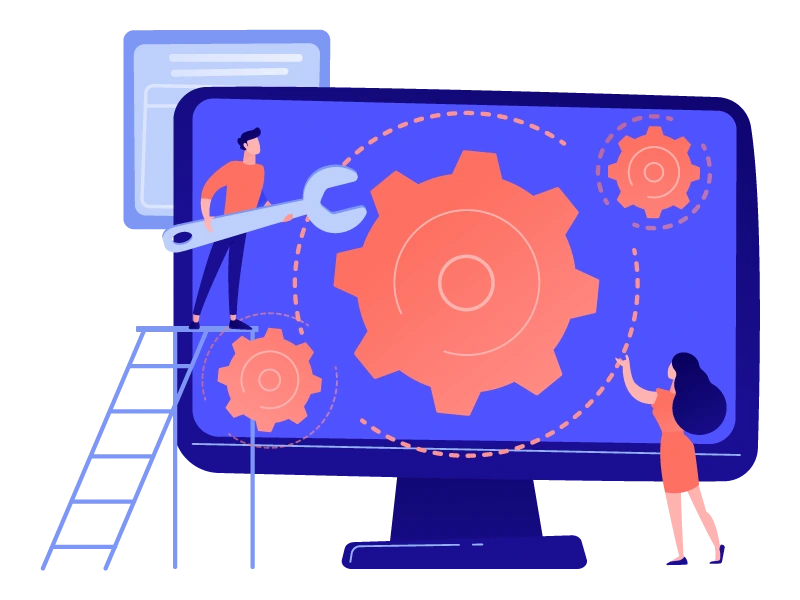It’s Monday morning. Your team gathers, ready to tackle a new sprint. The product manager drops a surprise; a last-minute feature request. The developers exchange knowing glances. Scope creep strikes again! But instead of panicking, they smile. Why?
Because they practice Extreme Programming (XP), which makes a sudden change, something that helps them adjust quickly rather than an enemy.
In XP programming, adaptability comes from frequent testing, customer collaboration and small, incremental changes. Extreme Programming in Agile helps teams avoid last-minute scrambles by integrating feedback early and often, making development smoother and more predictable.
What is Extreme Programming (XP)?
Extreme Programming (XP) is a software development methodology that emphasizes customer satisfaction, teamwork and adaptability. It was created by Kent Beck in the late 1990s to improve software quality and responsiveness to changing customer requirements.
XP focuses on short development cycles, frequent releases and constant feedback. Teams work closely with customers to refine requirements and make adjustments as needed. Its lifecycle can be divided into the following phases:
- Planning
- Design
- Coding
- Testing
- Listening
For instance, let’s say a new feature is needed by a customer. XP teams will incorporate it almost immediately, using small incremental enhancements, instead of taking a wait-and-see approach.
XP delivers high-quality software that satisfies customers’ requirements through an open and flexible software development process. Now, let’s understand what the underlying principles of Extreme programming are:
Basic principles of extreme programming
The XP development process is built on five core values. These principles ensure that software is developed efficiently while maintaining high quality and adaptability.
Communication
Effective communication is essential in XP. Instead of relying heavily on documentation, teams use direct interactions to share knowledge. Developers, testers and customers work closely together to ensure that everyone has a shared understanding of the system and its requirements. Techniques such as pair programming, daily stand-ups and frequent discussions help teams stay aligned and solve problems collaboratively.
Simplicity
XP promotes solving problems with the simplest solution that works. Instead of planning for every possible future scenario, teams focus on the immediate requirements and improve the system as needed. This approach, sometimes referred to as “You Aren’t Gonna Need It” (YAGNI), reduces wasted effort on features that may never be used. Keeping designs and code simple also improves maintainability and makes it easier for new developers to understand the system.
Feedback
According to Kent Beck, “Optimism is an occupational hazard of programming. Feedback is the treatment.” XP heavily relies on continuous feedback at multiple levels:
- System feedback: Continuous integration and automated tests offer immediate confirmation of new changes.
- Customer feedback: Regular releases and acceptance tests enable customers to see project progress and modify requirements as needed.
- Team feedback: Developers estimate and debate new requirements in planning sessions so that everyone knows what work is involved. This ongoing feedback loop helps find the problems at an early stage and correct them. This minimizes the risk of expensive mistakes down the line.
Courage
XP encourages developers to take bold actions when necessary, such as refactoring code, making architectural changes, or addressing technical debt. Because XP relies on automated testing and continuous feedback, teams can confidently make these changes without fear of breaking the system. Courage also extends to customer interactions – teams must be willing to push back on unnecessary features and advocate for sustainable development practices.
Respect
Respect is a foundational value in XP. Developers, clients and stakeholders should collaborate in trust and respect for one another’s input. Pair programming promotes collaboration and open communication guarantees that all voices are heard. By insulating themselves within a culture of respect, XP teams foster a culture in which innovation wins and productivity is maintained.
These five principles – communication, simplicity, feedback, courage and respect – are the very essence of XP and enable teams to build high-quality software that meets customer needs efficiently.
Best practices in XP
Rules play a central role in XP. In 1999, Don Wells introduced 29 rules that covered planning, managing, designing, coding and testing. Later, in 2003, Ken Auer defined XP by its rules, organizing them into “Rules of Engagement” (the environment) and “Rules of Play” (the minute-by-minute activities). While these guidelines shape how XP teams operate, you still need proven best practices to make your projects thrive.

Test-driven development (TDD)
You write tests first, then write the code that satisfies them. If you’re building a new login feature, you create a test that checks if valid credentials grant access. Only then do you code the logic to pass that test. This approach ensures fewer bugs and a cleaner design from the start.
Pair programming
Two heads, one keyboard. One person codes and the other reviews in real time. Imagine you’re implementing a complex algorithm. With pair programming, you catch errors faster and share knowledge on the spot, preventing bottlenecks when one team member is absent.
Continuous integration
Frequent commits mean you catch problems before they become showstoppers. Picture a scenario where each developer pushes changes daily. If there’s a conflict, it surfaces early and the team can fix it without halting progress for days.
Small releases
Ship code often and gather feedback. Instead of waiting weeks to show a new feature, you release it in smaller chunks. That way, users can try it and you can refine it quickly. If your product is an e-commerce site, small releases let you adjust features based on real shopper feedback, boosting sales potential.
Refactoring
You keep the codebase tidy. When you spot inefficient structures or duplicate code, you clean it up immediately. This step might seem minor, but it prevents long-term technical debt and helps new team members jump in without getting lost.
Now let’s see how these play out in a real world scenario:
Suppose you’re introducing a feature that manages user profiles.
- You start by writing tests (TDD).
- Then code in pairs to avoid mistakes (Pair programming).
- Each day, you commit changes to the main branch (Continuous integration).
- Then release small updates to gather user feedback (Small releases).
- Whenever you notice messy code, you tidy it up (Refactoring).
This loop ensures a stable product that evolves with user needs.
Applications of extreme programming
When you adopt XP coding, you’re equipping your team to handle challenges in various settings. Here are some common ways Agile XP is applied:

Startups and small teams
For small teams and startups, communication is direct and changes come fast. If you’re building a new app with limited resources, extreme programming in Agile is an iterative cycle that lets you deliver functional software quickly. For instance, you might develop a prototype of a payment app in a few weeks, gather feedback from early users and make adjustments in short cycles, keeping costs low and momentum high.
Complex projects
When requirements are unclear and projects are complicated, XP’s continuous testing and refactoring help reduce risk. Consider a situation where you’re building a data analytics platform with changing customer requirements. XP allows you to test small pieces of the system regularly, so you can adjust without the risk of a significant setback. This way, you identify problems early, so the end product is more stable.
Agile transformation
If your company is transitioning to Agile practices, extreme programming can be an effective guide. Suppose your team has been following conventional waterfall methods and you have to transition to an Agile environment. You can make the transition smoother through XP practices such as pair programming and frequent feedback sessions. This allows everyone to adapt easily to the new methodology.
Legacy system modernization
Upgrading an old system without causing disruptions is challenging. XP’s TDD and continuous integration let you make incremental improvements without breaking existing functionality. For example, if you’re updating an old CRM, XP practices help you refactor parts of the code safely, ensuring the system remains stable during the transition.
Customer-focused development
When customer satisfaction is a top priority, XP programming’s emphasis on regular feedback can keep your team align with user needs. If you are developing an e-commerce site, XP coding can be used to release new features regularly and elicit customer feedback. When you finally deliver the product, it would have lived up to their expectations and minimized costly revisions.
Cross-functional teams
XP encourages collaboration among developers, testers and business analysts. Different specialists consider multiple perspectives for complex and diverse projects. This collective effort results in a product that works well across all departments.
Educational settings
Agile development extreme programming is a practical teaching tool. Instructors use XP practices to show students how to work in teams, continuously test their code and adapt to feedback. This hands-on approach builds skills that students can take into the professional world.
Rapid prototyping
When you need to validate ideas quickly, extreme programming XP’s iterative cycles are ideal. Suppose your marketing team is brainstorming a new feature for an app. With XP, you can build a prototype, get quick user feedback and iterate, reducing the time spent on development while ensuring the final product is in line with user expectations.
XP is a versatile approach that fits a wide range of development scenarios, from startups to large-scale legacy modernization. With these applications in mind, let’s understand the advantages.
Advantages of extreme programming
When you adopt XP, you set your team up for success with clear benefits that impact both product quality and team morale. First, XP improves software quality through practices like Test-Driven Development (TDD) and continuous integration. For example, when you write tests before your code, you catch issues early, reducing post-release defects.
XP also boosts customer satisfaction. By delivering working software in small, regular increments, you allow customers to provide feedback throughout the process. If you’re launching a new feature for a web service, you can take regular feedback and implement it. Regular updates make users notice improvement and feel engaged, which can boost satisfaction scores.
Flexibility is also a strength. XP’s iterative approach allows you to adapt to shifting requirements without significant disruption. If market needs change, you can integrate feedback into the next iteration instead of having to begin a new.
Team collaboration improves significantly under XP. Techniques like pair programming and collective code ownership ensure everyone knows the project status, reducing miscommunication and making it easier to address challenges together.
XP programming also reduces risk by breaking work into manageable releases, enabling early detection of issues. Finally, it also promotes a sustainable pace, thus preventing burnout and keeping productivity high over time.
Conclusion
Extreme programming is more than just a collection of techniques. It’s a way of thinking that centers on collaboration, constant feedback and rapid adaptation. If you value an environment that supports flexible adjustments, regular updates and top-quality code, XP coding might be the key to boosting your team’s success. Every sprint becomes a chance to learn and improve, paving the way for better projects down the road.
FAQs
- What are the 5 phases of Extreme Programming?
XP follows five key phases:
- Planning
- Design
- Coding
- Testing
- Listening
- Who created Extreme Programming?
XP was created by Kent Beck in the late 1990s.
- What is Extreme Programming vs. Agile?
Extreme Programming is a specific Agile methodology that focuses heavily on engineering practices like TDD and pair programming.
- What is the difference between XP and TDD?
TDD (Test-driven development) is a core practice within XP. The latter encompasses a broader set of practices beyond just test-first development.
- What is the difference between Scrum and XP?
Scrum focuses on project management and workflows, while XP emphasizes engineering excellence and technical practices. Some teams combine both for maximum efficiency.



